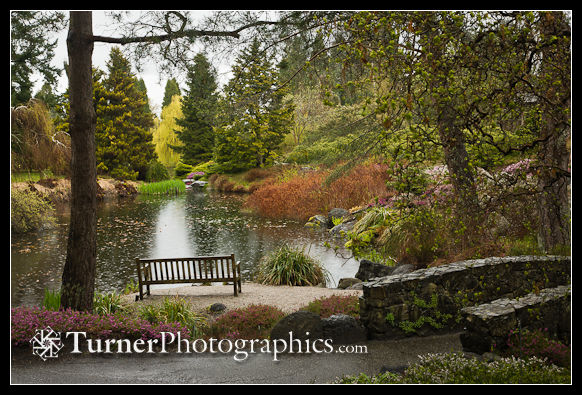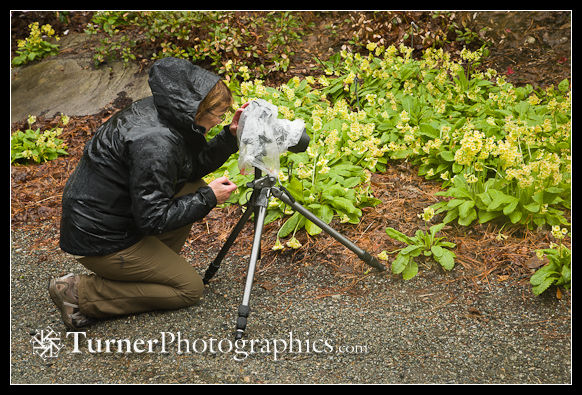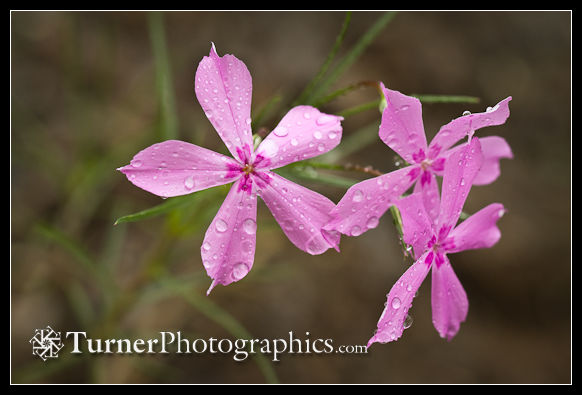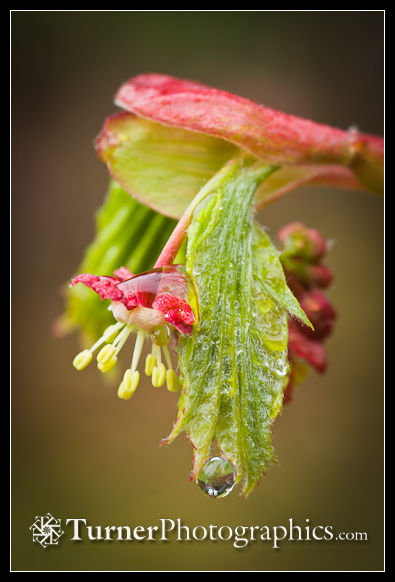Digital Photo Tip: Dealing with Rain
“Rain, rain, go away. Come again another day.” That’s a saying I learned on the playground many years ago. Unfortunately, just saying it doesn’t make it so. There are times when I’m out on a photo trip and it rains. What to do? Pack up and go home, wait for the rain to stop, or pull out the camera protection and keep working? If I’ve traveled a long way to photograph interesting plants I usually just tough it out and keep working. Here’s how I keep my equipment (mostly) dry so I don’t end up with an expensive repair bill.

There are three line of defense that I use: plastic bags, a specialized camera cover, or an umbrella.
Plastic Bags
I usually keep a plastic grocery bag or two stuffed in the bottom of my camera pack. If an unexpected sprinkle comes up while I’m out working I can pull out a bag and place it over my camera while I’m walking to my next subject. It’s possible to work with my digital SLR when it’s covered by a bag, but it’s definitely not convenient or easy. Sometimes I’ll poke the lens through one of the bag handles and then poke a small hole in the bag for the viewfinder. Then I can reach up under the bag to operate the zoom, focus, and camera controls. Overall, I find a bag to be best to protect the camera in a light rain while carrying it around on my tripod.
Specialized Camera Cover

You can spend a lot of money on waterproof fabric camera covers. If you find yourself working in the rain (or wet snow) a lot it might be worth the investment. However, I’ve found that the inexpensive plastic Rain Sleeve covers from Op/Tech work just fine. They’re widely available from camera shops, from Amazon, or online camera retailers. These fancy plastic bags will cover lenses up to about 300mm and are shaped for the lens barrel and body, with a drawstring to cinch them down around the lens shade. There’s a hole for the viewfinder, and the bag is big enough that you can squeeze your hand inside to operate the controls if you have a smaller camera body. With my big Canon 1Ds Mark II body I find I have to change settings through the bag.
The advantage of the specialized plastic cover is that it’s shaped to fit a camera with a long lens. It covers the camera completely and won’t blow off, so the camera stays drier. I’ve used these in fairly heavy rain. While it’s a lot harder to work with the bag on the camera than on a dry day it’s a manageable solution. Changing lenses is hard, and best done under a roof somewhere if one is available.
Umbrella

I carry a compact umbrella under the seat of my truck. When I’m working along a roadside it’s often faster and easier to hold the umbrella over my camera while I’m shooting. I used this technique in late April at Hell’s Canyon where I made this photo of Snake River Phlox (Phlox colubrina).
I’ll stop along the road near my subject, set my camera pack under the canopy in the back of my truck, and set my tripod for the approximate height I want for the first shot. Then I’ll pull out the camera and mount it on the tripod and place my umbrella over the whole rig. It’s a bit of a hassle to frame the shot and adjust the tripod while also holding the umbrella, but it’s manageable. If you have a friend along put them to work holding your umbrella for you.
I have also used an umbrella clamp (sold as lighting gear) to hold a long-handled umbrella to a tripod leg. This works when there’s no wind, but with any breeze the umbrella will increase camera vibration and you’ll need a faster shutter speed.
 In addition to covering the camera, you have to think about the front of the lens. I keep a protective UV filter on my lenses all the time, so a few raindrops aren’t going to hurt it. But those raindrops will make soft, fuzzy spots in your photos. I keep a clean cotton bandana in my pocket that I can pull out to wipe my lens dry. It’s soft and won’t scratch once it’s been through the laundry a few times. You can’t always see the water droplet effect through the viewfinder, so be sure to check the front of your lens before every setup when working in the rain so you don’t get a nasty surprise when you get home and look carefully at your work on your computer monitor.
In addition to covering the camera, you have to think about the front of the lens. I keep a protective UV filter on my lenses all the time, so a few raindrops aren’t going to hurt it. But those raindrops will make soft, fuzzy spots in your photos. I keep a clean cotton bandana in my pocket that I can pull out to wipe my lens dry. It’s soft and won’t scratch once it’s been through the laundry a few times. You can’t always see the water droplet effect through the viewfinder, so be sure to check the front of your lens before every setup when working in the rain so you don’t get a nasty surprise when you get home and look carefully at your work on your computer monitor.
After I return to my truck I dry my camera off with a towel before returning it to my pack to travel to my next stop. Modern digital cameras are relatively tolerant of a little moisture, but you want to keep them as dry as possible, even if you have the top-of-the-line weatherized versions. I’ve made the mistake of getting my camera too wet and had to have circuit boards replaced, at considerable expense.
Working with a pocket camera is easier. Carry it in an inside pocket where it stays dry and just pull it out for the short time it takes to compose and squeeze the shutter. Like a big camera, watch for water droplets on the lens. They’re more likely to be a problem with pocket cameras since they don’t have a lens shade to shelter the front element.
Why would you want to photograph in the rain? The light is soft and gentle, water droplets can add an almost magical touch, and you may not have the option of waiting around for the rain to stop. With a little care you can keep photographing in the rain.

